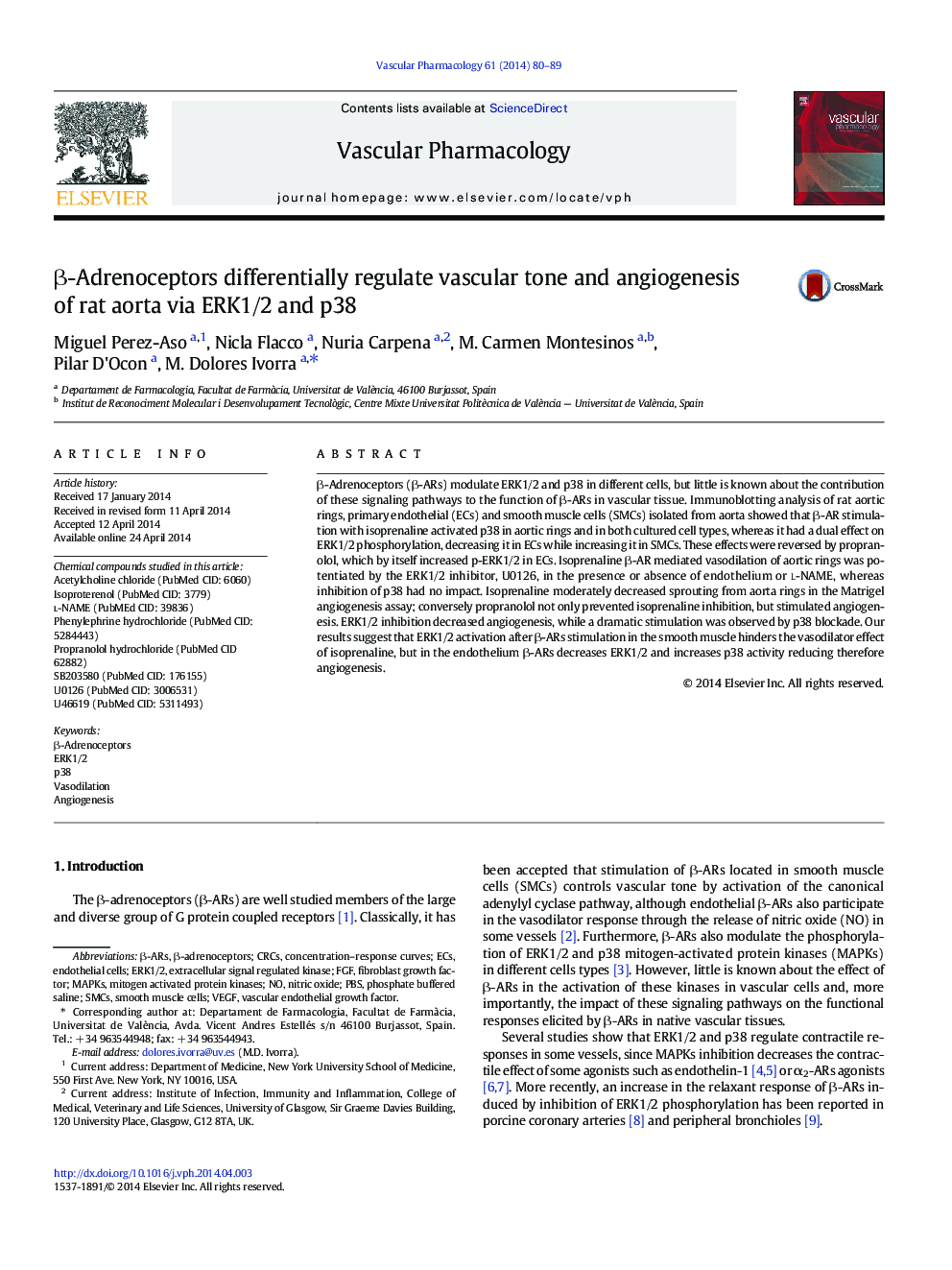| Article ID | Journal | Published Year | Pages | File Type |
|---|---|---|---|---|
| 2574191 | Vascular Pharmacology | 2014 | 10 Pages |
β-Adrenoceptors (β-ARs) modulate ERK1/2 and p38 in different cells, but little is known about the contribution of these signaling pathways to the function of β-ARs in vascular tissue. Immunoblotting analysis of rat aortic rings, primary endothelial (ECs) and smooth muscle cells (SMCs) isolated from aorta showed that β-AR stimulation with isoprenaline activated p38 in aortic rings and in both cultured cell types, whereas it had a dual effect on ERK1/2 phosphorylation, decreasing it in ECs while increasing it in SMCs. These effects were reversed by propranolol, which by itself increased p-ERK1/2 in ECs. Isoprenaline β-AR mediated vasodilation of aortic rings was potentiated by the ERK1/2 inhibitor, U0126, in the presence or absence of endothelium or l-NAME, whereas inhibition of p38 had no impact. Isoprenaline moderately decreased sprouting from aorta rings in the Matrigel angiogenesis assay; conversely propranolol not only prevented isoprenaline inhibition, but stimulated angiogenesis. ERK1/2 inhibition decreased angiogenesis, while a dramatic stimulation was observed by p38 blockade. Our results suggest that ERK1/2 activation after β-ARs stimulation in the smooth muscle hinders the vasodilator effect of isoprenaline, but in the endothelium β-ARs decreases ERK1/2 and increases p38 activity reducing therefore angiogenesis.
Graphical abstractFigure optionsDownload full-size imageDownload high-quality image (108 K)Download as PowerPoint slide
